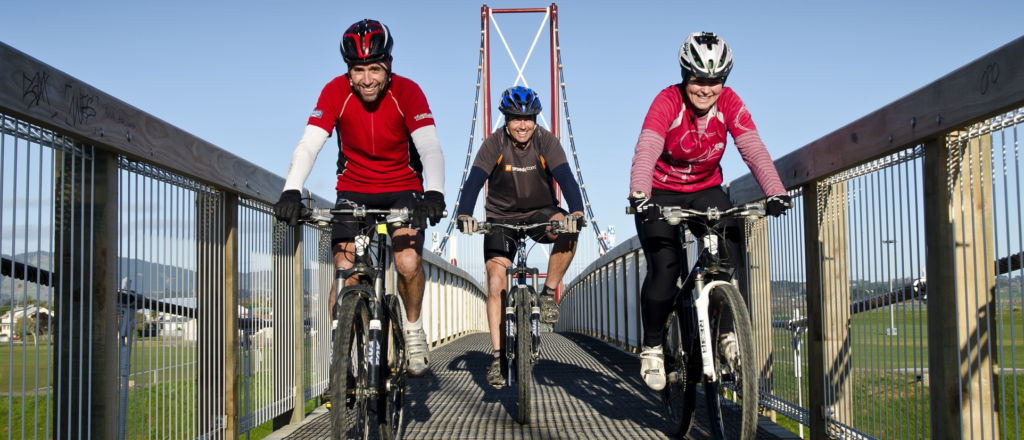
Cyclists cross Pakowhai ki Otutaopuku bridge at the start of the Motu Trails Dunes Trail in Ōpōtiki
Introduction
Walking and cycling, the active transport modes, have been recognised to bring significant benefits at a societal and economic level. Greater investment in active transport modes has been urged by health professional bodies. Walking, cycling and other active modes are an increasing component of the mode mix across the network. The appropriate provision for active transport modes will require deliberate consideration when optimising the network. See Resources and research for active modes.
As urban populations increase, optimising the safety and efficiency of the network is becoming increasingly important. The Road Safety Strategy 2010-2020 invokes the principles of a Safe System to minimise death or serious injury in the event of a crash. Active modes are considered a medium priority in the Safer Journeys strategy, which looks to “achieve a reduction in the crash risk for pedestrians and particularly cyclists, while at the same time encouraging an increase in use of these modes through safer roading infrastructure”.
To ensure the optimal efficiency of urban networks and achieve an urban and rural network increasingly free of death and serious injury in the context of the active modes, it is critical that the sector works together collaboratively to put best practice into the hands of practitioners, and ensure interventions are delivered consistently across the network.
The Research and Guidelines Steering Group agreed to establish a working group in August 2012 to consider cycle lane signage and whether there was a need for new markings or signs. The working group has successfully conducted trials of new markings in Auckland, Wellington, Nelson, Palmerston North and Dunedin during 2014 that are expected to lead to amendments of the Road User Rule and TCD Rule. See Cycling Markings.
Active Modes Infrastructure Group
At its meeting in April 2014, the working group discussed its role within the rapidly changing environment for all active modes and agreed that a group with a wider and more strategic focus than just nationally consistent markings for cycling infrastructure was needed. There is a real risk in such an environment that the limited resources of individual councils can be stretched or wasted as they seek to respond to changing demands in the absence of clear guidance on best practice. When the group reconvened in Auckland in June 2014, it adopted new terms of reference and a programme for the next year with a wider scope to address all aspects of the provision of infrastructure for active transport modes. See current terms of reference (see members).
The Active Modes Infrastructure Group follows the established model for collaboration within the Road Controlling Authorities Forum in response to changing needs within the sector to ensure sector problems and solutions are agreed, owned and implemented consistently by the sector. Go to Working Group (AMIG) page for group meetings.
The objective of the Active Modes Infrastructure Group is to:
- Identify best practice and make this available to practitioners;
- develop and promote sector agreement;
- develop or steer development of guideline documents; and
- promote consistent implementation of best practice in the context of active modes.
